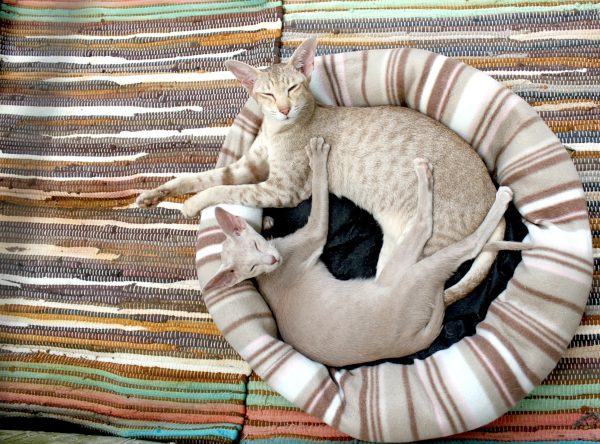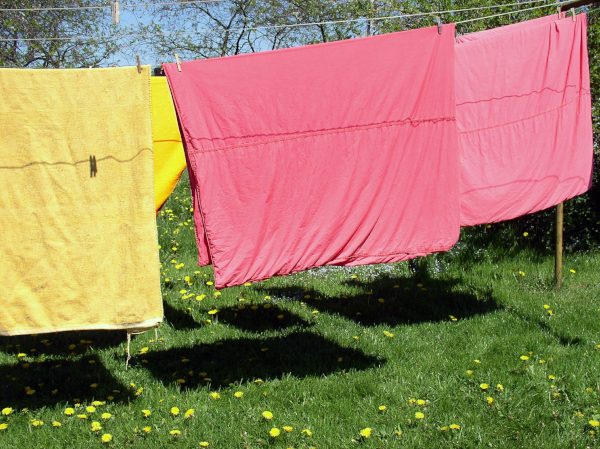Articles
What To Do With Old Pillows and Duvets
Every pillow and duvet will eventually go through wear and tear. If you have old ones that you need to get rid of, there are several creative and environmentally friendly ways to reuse, repurpose, and recycle them.
Old pillows and duvets cannot typically be recycled or donated. You can't recycle them because they're unrecyclable and donation centers don’t accept them due to hygienic reasons. Your best option is to repurpose them or just throw them in the bin as a last resort.

If you want to donate them, you have to make sure that they’re only used slightly or still in good condition. Due to hygienic reasons, Donation Centers don’t accept old pillows and duvets readily.
It’s best to check with your local shelters and recycling centers.
But if they’re really past it, you can still get them discarded appropriately. There are services that specialize in keeping old pillows and duvets out of landfills, such as a textile recycling center. You can visit their website to find a location near you.
Table of Contents
Why Can’t Old Pillows and Duvets be Donated or Recycled?
Old pillows and duvets are not recyclable, they should never be taken to the recycling bin. If they’re in good condition, you might be able to take them to a local thrift store, donation center, or shelters.

Some charity organizations and animal shelters will often accept your spare duvet or pillows as bedding for the homeless or animals. It’s a great trade-off because you get to help some people and animals in the process.
If that’s not the case, the best way to get rid of them is to search for a textile recycling center online.
There are also other creative ways you can recycle an old duvet. You can upcycle your old duvet and turn them into new products like carpet padding or animal bedding.
Pillows, however, generally aren’t as easy to throw away. This is because pillows aren’t as pure as you might think. If your old pillow is not made of 100% natural, sustainably-sourced latex, all-natural wool, charcoal, regular bamboo, or silk, they’re not readily susceptible to fire.
Some pillow fillings are also made of potentially harmful synthetic materials and chemicals including polyester fibers. The fibers can damage marine life, so it’s best to keep it out of oceans.
If you’re interested in recycling your old pillows, you can still put your old pillows to use and keep them out of landfills.
With pillows, you can make different kinds of cushion-like floor, knee, or even a garden cushion. You can also turn your old pillows into a throw pillow and put them on your couch.
Another creative way is to make a floor or bathroom rugs around the house. All you have to do is open it up, remove the stuffing and then use the fabrics as rags for your cleaning projects. The extra stuffing from the rug can be used to stuff another pillow.
If you have pets, you can even make a pet bed to give your pet a comfy place to sit. You can find all sorts of pet bed tutorials that don't require any sewing.
Old pillows also make a quick and easy draft-blocking device. You can use them to block the draftiest door or stuff them up to your chimneys.
When Should You Throw Away Old Pillows And Duvets?
Replacing your pillows and duvets regularly is important. This prevents allergen build-up and enhances your sleep quality. As a general rule of thumb, you should replace your pillows once every six months to two years.

Another good way to test whether your pillow or duvets needs replacing other than knowing how long you’ve had it is to check it’s quality.
These indications include your pillow starting to lose its cushion or there are noticeable lumps in the foam or filler materials. It’s also time to replace your pillows when there are permanent stains from body sweats and oils.
If it’s a feather pillow, and you constantly fluff it up to support your head, then you may need to replace it.
You’ll also notice that they no longer provide comfort when you sleep. Some of the common discomforts include waking up with aches and pains in the neck and shoulders.
Unlike pillows, duvets last longer. They usually last at least 5 to 10 years depending on their quality.
You'll know it’s time for a replacement when your duvets start to feel limp or the feeling isn’t as evenly spread through the casing.
Why Should You Replace Your Old Pillows And Duvets?
The test of time can take its toll on your pillows and duvets. When you sleep, your body sheds skin, hair, and body oil that your pillow and duvet absorb. Over time, the build-up of these materials can cause them to smell or appear in yellow spots or stains despite washing.
With time, these conditions will naturally attract dust mites to grow in your pillow and duvets. While dust mites are not necessarily dangerous, they add extra weight to your pillow and impair the quality of your pillow in the long run.
These tiny creatures also feed on your skin. So if you have allergies, dust mites can worsen your allergies to the extent that you can’t sleep properly.
Can You Wash Old Pillows And Duvets to Prevent Allergens?
If your pillows and duvets have synthetic stuffing they can be machine washed. It’s best to wash them in hot water once every four to six months. The high water temperature can kill allergens breeding in your duvets and pillows.

Keep in mind that regular washing can keep the dust mites from breeding in your pillows and duvets, but they still need to be replaced once they’re no longer supportive.
How to Make Your Old Pillows and Duvets Last Longer?
The best way to ensure you reach your pillow or duvet’s maximum lifetime is by taking care of them and washing them properly.
Other than washing, the easiest way to keep your pillow clean is to have a pillow cover in addition to your pillowcase. The pillow cover acts as an extra buffer and prevents some excess skin and like oils from your beauty and hair products from reaching your pillow and attracting dust mites.
You should also make sure that you plump up your pillows when making your bed to keep them feeling more full.
With your duvet, you shouldn’t wash it regularly. You can pop it on the washing line on a breezy day to keep it fresh. It’s recommended to do this every couple of months to keep your bed at its best.
Always use bed linen to protect your duvet. Bed linen can protect your duvet from hair, dust mites and oils so make sure you wash your bed linen regularly as it keeps your duvet fresh too.
Using protective covers such as a pillow cover and bed linen can double the life of your pillow and duvet.
Frequently Asked Questions

Should I throw away feather or down pillows and duvets in the compost bin?
If your pillows and duvets are feather or down, you can empty the feather into a compost bin. You have to remember that you need to remove all poppers, labels, etc before putting it in the compost bin.
Can I use old pillows and duvets as a packing filler or for moving?
You can also keep old pillows or duvets around to use them as packing or filler for moving. You’ll need a vacuum storage bag to compress them until needed. Then, you can use them to protect delicate items to ship or you want to protect furniture from scrapes.
Can I burn old pillows and duvets?
In some cases, there are mandatory regulations that specify fire resistance on upholstered furniture like pillows and mattresses. Since fires are sometimes caused by the ignition of bedding items, so pillows and duvets can’t be burned.
